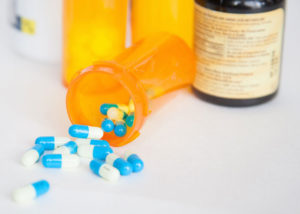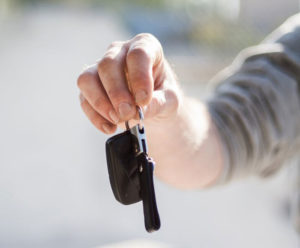Extra, extra, read all about it! Tiger Woods was arrested on Monday for a DUI. Alcohol was not involved.

Somewhere along the lines, “driving under the influence” has been swapped in our minds for “drunk driving.” And while it’s true that driving under the influence does include the effects of alcohol, that swap dangerously allows us to forget about drugs. DUI does not necessarily mean driving under the influence of alcohol; it can also mean driving under the influence of drugs. We’re talking about drug driving.
Alcohol is (Mistakenly) Held to a Higher Standard than Drugs
Because people are so focused on the idea of drunk driving rather than driving under the influence in general, drug driving is left out off their radar. No, drugs and alcohol are not the same thing. However, they both have incredible impairment abilities. We know that alcohol leads to drunkenness, which impairs our ability to drive safely. Understandable. But why is it so hard for us to comprehend that drugs also cause impairment? Think about it. Whether it’s the calming effects of marijuana or the pain relief of a Vicodin prescription, people take drugs – prescription or not – for their effects.
And just so we’re all on the same page, let’s look at some synonyms for “effect:” consequence, repercussion, response, and influence. These are all things that are done to you by something else. So if you’re not in your right, functioning mind, uninfluenced by outside factors, then why would it be okay to drive? Again, we’re quick to agree with that disclaimer when alcohol is the influencing factor. But we need to open our minds to the fact that drugs impair too.
Impairing Effects of Common Drugs
Marijuana – relaxation, disorientation, image distortion, altered perception of time and space
Cocaine – excitation, dizziness, disorientation
Antihistamines (Clarinex, Zyrtec, Benadryl) – drowsiness, dizziness, blurred vision, confusion
Valium – 10 mg of Valium can have similar effects to a blood-alcohol concentration of 0.10 percent (0.08 percent is the legal limit)
Hydrocodone (Vicodin, Norco) – dizziness, drowsiness, impaired reflexes, muscle weakness, clouded thoughts
Blurred Lines Heighten the Danger Level of Drug Driving
A person’s blood-alcohol concentration (BAC) must be below 0.08 percent in order to legally drive. That’s true in all 50 states. BAC is easy to measure with Breathalyzers, which are usually pretty accurate. Drunk driving is very dangerous but at least there is a way to measure it and stop someone.
Drug driving is different. There isn’t an accurate way to measure a person’s drug content or pinpoint a level at which a person is too impaired to drive. For one thing, the amount of time a drug remains in a person’s system varies by drug. For example, the THC in marijuana can linger in your bloodstream for up to a month after it was originally consumed. Hydrocodone, on the other hand, can stay in your system anywhere between 6 and 24 hours. So there’s really no definite point at which a person who has taken one of these drugs can claim that they’re good to drive. On that same point, it’s hard for a cop to accurately determine the impairing factor or the level of impairment at the time that a driver is stopped. This enigmatic element only adds to the danger of drug driving.
Doctors Are Not Defenders
 Many people assume that “drugs” refers to illicit drugs like marijuana and cocaine. However, over-the-counter drugs and prescription drugs can just as easily impair a person’s ability to drive. A prescription from a doctor is not a defense. Many drugs that doctors prescribe will explicitly describe the dangers on the label. “Do not drive or operate heavy machinery” is a very common label warning. Take it seriously. Medications will also affect people differently. You may not feel the drowsiness that a label warns about. But your reaction time could still be impaired. However, you won’t know that until you actually do something that calls for focus and quick reactions. But why test it? Driving under the influence of alcohol or drugs can injure or kill not only yourself but innocent bystanders as well. Is that a risk you’re willing to take?
Many people assume that “drugs” refers to illicit drugs like marijuana and cocaine. However, over-the-counter drugs and prescription drugs can just as easily impair a person’s ability to drive. A prescription from a doctor is not a defense. Many drugs that doctors prescribe will explicitly describe the dangers on the label. “Do not drive or operate heavy machinery” is a very common label warning. Take it seriously. Medications will also affect people differently. You may not feel the drowsiness that a label warns about. But your reaction time could still be impaired. However, you won’t know that until you actually do something that calls for focus and quick reactions. But why test it? Driving under the influence of alcohol or drugs can injure or kill not only yourself but innocent bystanders as well. Is that a risk you’re willing to take?
Tiger Woods claimed that his impairment was not caused by alcohol but instead was “an unexpected reaction to prescribed medications.” There are some major red flags here that we need to pay attention to:
 We’ve seen all of the highway signs shout out in a string of orange lights: DUI does not have to be booze. Meds can impair. Sure, we can probably tie the recent illumination on drug driving to Tiger Woods’s unfortunate Memorial Day mishap. But the exposure is needed. It’s just too dangerous to allow ourselves to be blind to the fact that drugs can impair our abilities to function normally, regardless of whether they’re illicit, over-the-counter, or prescription. Just drop the keys. Drug driving is not worth the risk.
We’ve seen all of the highway signs shout out in a string of orange lights: DUI does not have to be booze. Meds can impair. Sure, we can probably tie the recent illumination on drug driving to Tiger Woods’s unfortunate Memorial Day mishap. But the exposure is needed. It’s just too dangerous to allow ourselves to be blind to the fact that drugs can impair our abilities to function normally, regardless of whether they’re illicit, over-the-counter, or prescription. Just drop the keys. Drug driving is not worth the risk.
If you or someone you know is struggling with addiction, New Start can help. Please don’t hesitate to call our addiction staff at 855-737-7363 or reach out to us on our live chat.

